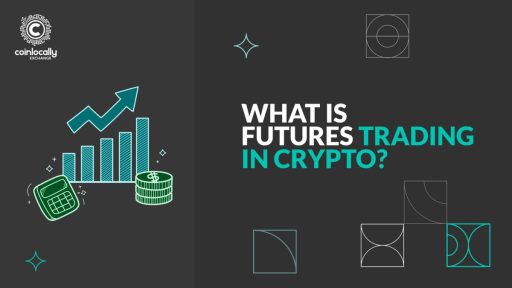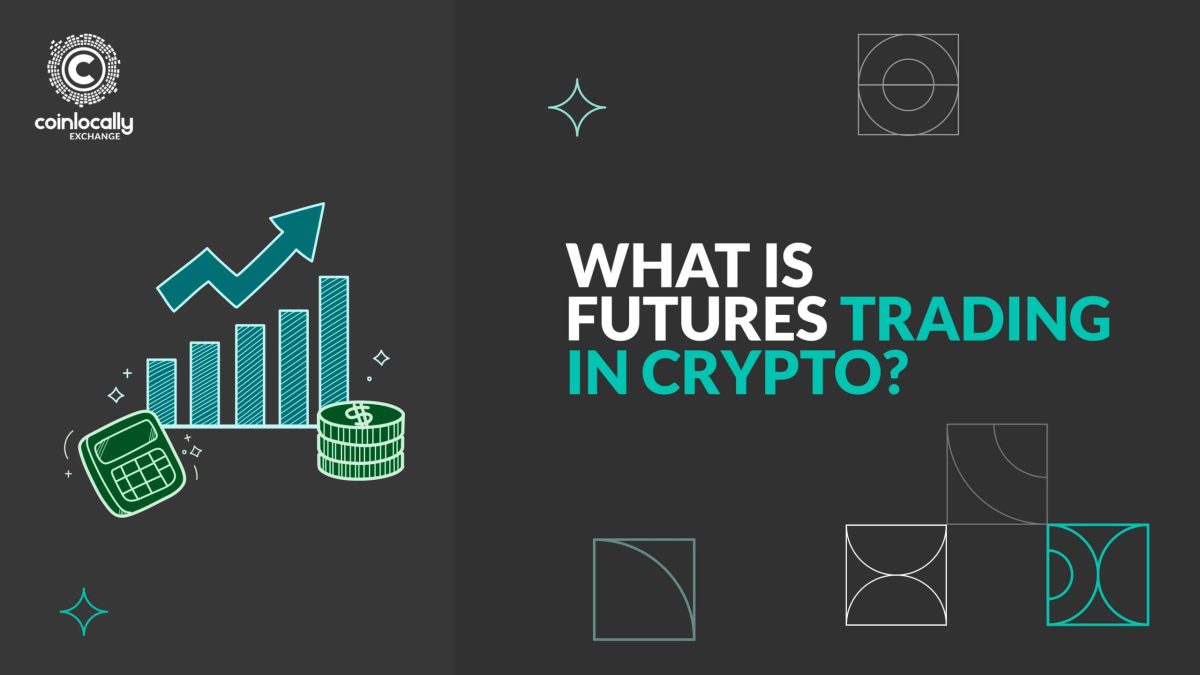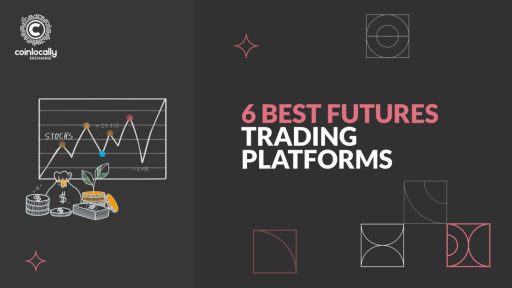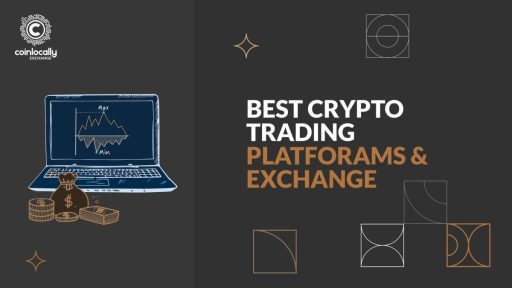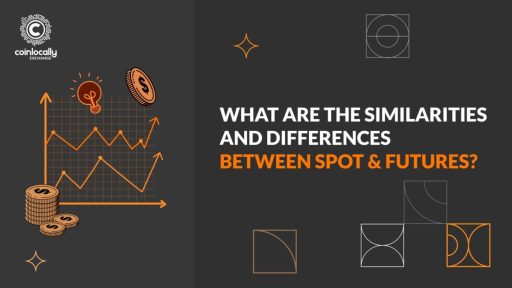Crypto futures are derivative contracts where traders can speculate on the future price of a digital currency. In this way, investors can trade currencies without buying or holding them, which is the main feature of futures.
Table of Contents:
• Is a margin account necessary to trade futures?
• How is margin calculated for futures trading?
• Leverage
What is Futures Trading?
Simply put, when investors trade Bitcoin futures contracts, they are speculating on the future price of Bitcoin. Basically, there are two sides to this transaction. One party pledges their money for the increase in the price of Bitcoin, while the other party pledges their money for the decrease in the price of Bitcoin.
The party who made a mistake in the transaction pays their money in the opposite way. This is the part of the futures contract that both parties sign when entering into the transaction and are aware of the rules.

Futures trading in crypto are derivative contracts that allow investors to speculate on the future price of a digital currency without buying or holding it. There are two sides to the transaction: one party pledges their money for the increase in the price of Bitcoin, and the other party pays their money in the opposite way.
Crypto Futures has a specific number of units, pricing criteria, and settlement methods that investors should consider before trading. Depending on the conditions prevailing in the crypto market, the investor can trade, cancel it or sell it to another party.
Trading futures contracts allows you to speculate on the price of a security or commodity in the future. An investor can use a futures contract to buy or sell an asset at a predetermined time and price.
Consider the operations at Old MacDonald’s dairy farm as an example. His cows eat a combination of hay, which he grows himself, and corn, which he must purchase. Old MacDonald makes more money when corn prices are low because it costs him less to feed the cows that produce the milk he sells. However, when corn prices are high, MacDonald Farm milk profit margins shrink.
Farmer Mac, on the other hand, can use futures contracts to lock in the price of corn from his suppliers before the corn growing season even begins. This allows him to mitigate, or hedge, the risk of a difficult growing season, which would cause corn prices – and thus his bovine feeding costs – to skyrocket.
Investors can trade futures contracts on everything from market indices (e.g., S&P 500 futures) to commodities (e.g., crude oil, natural gas, corn, and wheat), metals (e.g., gold and silver), currencies (including bitcoin), treasuries, and more in non-bucolic settings. Although institutional investors primarily trade futures, retail investors can also speculate by using a futures trading platform. The National Futures Association is the regulatory body in the United States that oversees futures trading (NFA).
Cost of trading futures
Futures commissions can range from less than a dollar for most commodity futures to as much as $10 per contract for bitcoin futures.
Aside from commissions, some brokers charge monthly platform fees and market data fees, so it is critical to consider all costs before choosing a futures trading platform.
To trade futures contracts, each online broker has a different minimum deposit requirement. To minimum deposit for most inline brokerages is less than $1,000. You must first apply for margin trading and futures trading approval before you can trade futures.
Futures trading in crypto involves speculating on the price of a security or commodity in the future, with the National Futures Association regulating it.
How to trade futures
Futures trading generally requires a funded online broker account with margin and futures trading approval. Once everything is in place, do some research to determine which contract you want to trade, fill out the order ticket, and then place your trade.
Keep in mind that the margin requirements for each futures contract vary. Also, determine whether the contract is cash-settled or physically delivered at the time of expiration. If you hold your position until the contract expiration date for contracts with delivery upon expiration, you may become liable for the entire trade value (plus delivery costs).
Is a margin account necessary to trade futures?
To trade futures with an online broker, you must have a margin account. The margin requirements will differ depending on the instrument traded. For example, because S&P 500 e-minis are the most popular (as well as the most liquid) futures contracts traded in the United States, margin requirements are lower on average.
Futures trading requires an online broker account with margin and futures trading approval. Margin requirements vary depending on the instrument traded, with S&P 500 e-minis being the most popular.
How is margin calculated for futures trading?
Before you open your position, you must first ensure that you have sufficient capital to meet any margin requirements (i.e., initial and maintenance margin). The margin requirement is usually a percentage of the underlying asset value that each contract controls.
To speculate on a price increase in the March 2021 Wheat contract (Globex ticker code: ZWH1), place a buy-to-open order to go long one Chicago SRW Wheat Futures contract. According to the contract specifications, one contract controls 5,000 bushels of wheat (136 metric tons), with a price of $6.53 per bushel on January 6th, 2021.
The total trade value is $32,650, which is equal to the underlying 5,000 bushels multiplied by the price per bushel ($6.53). The margin required to open this position is 5% of the trade value, or $1,650. You can exit your existing long position with a sell-to-close order.
More information: If the price of wheat fluctuates significantly, there may be variation margin, which requires you to post additional collateral or risk having your trade closed early. Overall, trading as a speculator differs from trading as a hedger or commodity producer because hedgers remove risk by transferring it to you as a speculator.
Margin is a percentage of the underlying asset value used to speculate on a price increase.
Valuing Futures
The valuation of futures differs from what day traders are used to from trading traditional securities.
A futures contract, as a derivative, derives its value from the underlying asset’s value and the time until expiration.
Obviously, the value of the futures contract is heavily influenced by the value of the underlying asset, but it is the time value of a derivatives contract that distinguishes valuing futures.
A derivatives contract’s time value is determined by the potential price variation that can occur between the present and the expiration date.
For example, while a barrel of oil may currently trade at $75 per barrel, a futures contract with a strike price of $75 may have a different value because the price of a barrel of oil may change between now and the expiration date, and the contract holder would face a profit or loss based on that potential change.
Leverage
Because most contracts are set to expire in a relatively short period of time, traders are generally only permitted to place a fraction of the contracted value for a futures contract.
This means that futures traders have access to significant leverage through their futures exchange, in addition to the leverage provided by their broker.
As a result, futures trading allows for highly leveraged wagers on a wide range of potentially volatile assets. Futures traders face potential gains and losses that are only exceeded by what options contract traders face.
While leverage is neither inherently good nor bad, it can be a double-edged sword in that it allows you to make outsized gains while also allowing you to lose more than your account is worth. When trading futures, you must be very protective of your positions and keep hard stops in place at all times.
Futures are derivatives that derive their value from the underlying asset’s value and the time until expiration. Leverage can be a double-edged sword, so traders must be protective of their positions and keep hard stops in place.
Futures Trading Strategy
Unlike most equities and bonds, where day traders have general access to all public information, futures contracts cover assets that may be only lightly regulated and have little or no public information.
This means that day traders will be competing against institutional traders who have a strong understanding of fundamental factors.
As a result, most day traders tend to trade on technical factors in futures markets, where institutional investors have a significant advantage. Futures contracts also provide day traders with a variety of arbitrage opportunities.
Analyzing the futures indices, which include the Dow futures, S&P futures, and NASDAQ futures, is an easy way to get started with futures in your portfolio.
Market Profiling is another popular strategy for technical traders in the futures market that involves using volume based on price rather than time to find value areas to trade against.
Is futures trading risky?
Yes, futures trading is risky and not for everyone. It not only involves the use of leverage (margin) and potentially volatile assets, but it also involves the risk of incurring an obligation to make or accept delivery of the underlying asset and being responsible for settling the total trade value.
You can avoid having to physically deliver or cash settle the trade value if you close your position before it expires.
Futures trading is risky and not for everyone, as it involves the use of leverage and potentially volatile assets, as well as incurring an obligation to make or accept delivery of the underlying asset and being responsible for settling the total trade value. Analyzing the futures indices is an easy way to get started, and market profiling involves using volume based on price rather than time to find value areas.
The bottom line
Due to the complexity and risk, futures trading is not suitable for every investor. When compared to the amount that must be deposited as margin or collateral, futures contracts have extremely high price sensitivity. If an investor does not want to close his position following an adverse movement, he should have substantial reserves on hand.


